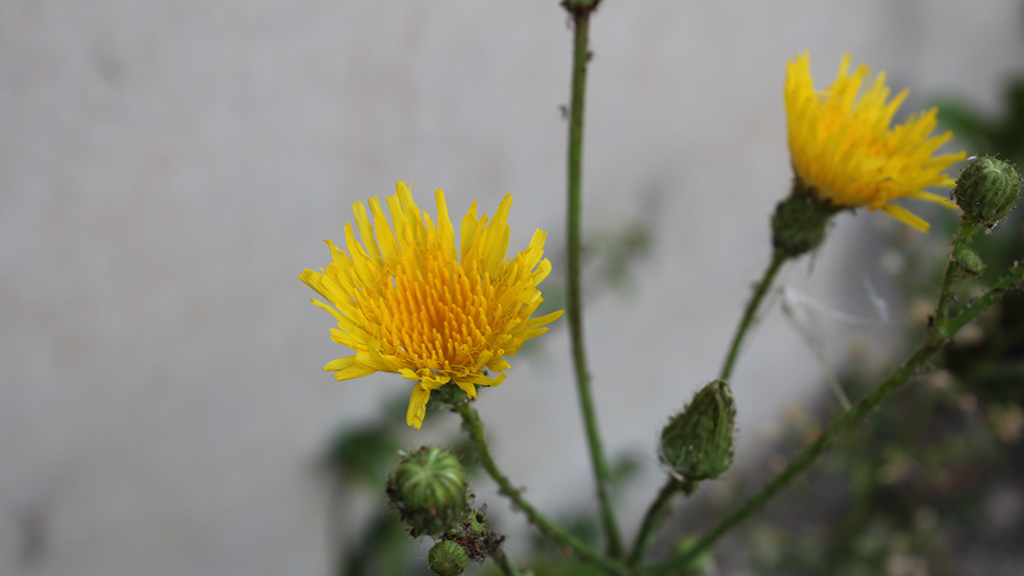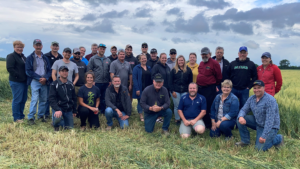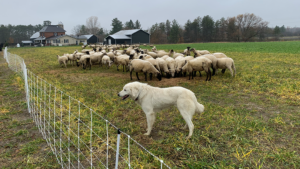Weed control
TIPS FOR THE 2023 GROWING SEASON

WEED CONTROL IS critical for high yields every year, and for the 2023 growing season, here is the latest advice on several problem species from Mike Cowbrough, weed specialist with the Ontario Ministry of Agriculture, Food and Rural Affairs. He recently presented on this topic at the Ontario Agricultural Conference in early January held at the University of Guelph Ridgetown Campus.
Cowbrough focussed on three problem weeds, but before he talked about how best to manage them, he noted that farmers might want to be aware that there may be potential markets for two of them in the years to come.
Perennial sow thistle is already a popular medicinal plant in places like Indonesia. It contains cytotoxic steroids that can be used to treat certain cancers. It may also improve exercise performance and alleviate fatigue, and it could be used to treat diabetes and high blood pressure. Field horsetail is being examined as a treatment for arthritis, baldness, and cancer.
SOW THISTLE
Because sow thistle propagates through seed production and rhizome surface spread, it is critical to address both. Unfortunately, this takes considerable effort. The ability of this weed to quickly enlarge its root mass is impressive.
Reducing shoot growth is best done in the spring through herbicide use, flaming or cutting, and the key is repetition — stopping re-growth is absolutely critical. In the spring, as with any perennial plant or tree, energy (carbohydrates) is moving from the roots of the sow thistle upward to support shoot growth, and Cowbrough notes that the more shoot growth is stopped, the more the roots will be drained of energy and become smaller — and the likelier it is that the plant will eventually die off.
However, there is a trick that Cowbrough shares in terms of the timing of herbicide application.
“Shoot growth will continue until what’s called the basal rosette (five leaf) reaches the ‘compensation point,'” he says. “This is when the carbohydrate reserves change course and go from shoots to roots… If herbicides are applied at this stage, it means you’re less likely to get re-growth, and if the herbicides are systemic, they will move down into the roots.”
Herbicides should be applied in corn at the V1 to V6 stage, and in soybeans, from the first to third trifoliate.
HERBICIDE STUDY
Cowbrough has conducted an experiment of sow thistle control with the weeds planted in pots. He chose a few systemic herbicides deemed most effective based on the scientific literature and anecdotal reports from around the province. He measured shoot growth and found a range of responses.
“I quantified the root mass as well because I was interested to see if herbicides, especially the systemic ones, had any impact on reducing root growth as well as shoot growth,” he says. “As expected with sow thistle, it was pretty amazing in terms of the level of root mass. One two-inch root fragment produced 46 grams within eight weeks, three times the amount of biomass than what’s produced in the shoot, so that’s almost a three-to-one ratio.”
Glyphosate, 540 grams/litre applied at a rate of 1.34 litre/acre, resulted in those potted sow thistles producing close to zero shoots and root growth. Similar results occurred with Enlist 1 (720 millilitres/acre) at the highest label rate. Among others tested, Engenia (dicamba) at a rate of 0.4 litre/acre produced good root and shoot control but not as good as glyphosate or Enlist 1.
OTHER CONTROL METHODS
Because sow thistle has dormant roots in the fall, fall-seeded cover crops will have little impact, but those present in the spring can help reduce sow thistle shoot biomass.
Moldboard plow tillage is the best non-chemical treatment, says Cowbrough, and best done in the spring. Deeper plowing of 25 centimetres is preferable, using a disc harrow. “This is what it takes for meaningful sow thistle control,” he explains. To those farmers reluctant to do that, he suggests that “if you are really struggling with sow thistle control, you have dense populations, try it on a small scale and then scale it up if it’s working.”
A Weed Zapper can be used to flame the plants in the spring, which at the very least stops seed production, but there has not been much study into how this method impacts root growth.
BLUEGRASS
Cowbrough and his colleagues identified five species of bluegrass in 2021 and 2022 in the counties of Bruce, Essex, Haldimand, Middlesex, Waterloo, and Wellington. Fifty per cent of samples were annual bluegrass, with the remainder being perennial species: roughstalk bluegrass, fowl meadow grass, Canada bluegrass, and Kentucky bluegrass.
“At this point, I’m not sure how important it is to be able to differentiate between the species, but some of the perennial types have stolons that allow them to creep along the surface and plant nodal roots,” says Cowbrough. “It’s a pretty amazing species in terms of its ability to spread, and spread in pretty tough environments.”
In terms of control methods to complement herbicide use, unfortunately, cover crops can actually increase the survival of bluegrass seed over the winter. Deep tilling with a moldboard plow will be most effective, much better than vertical tillage.
In 2021, Cowbrough did a study with Dr. Francois Tardiff and Dr. Peter Smith looking at herbicide control of bluegrass in winter wheat with early April applications. Three herbicides were found to be effective: Group 2 products Simplicity GoDri and Varro (both with non-ionic surfactants) and Group 1 product Axial. Apply these products when the bluegrass is less than 10 centimetres tall.
Cowbrough adds that broadleaf tank mix partners work well if you want to control more groups of weeds. Their study found that various tank mixes did not reduce control of bluegrass, nor did they reduce winter wheat yield. There are various pre- and post-emergent options that work in corn and soybeans.
FIELD HORSETAIL CONTROL IN E3 SOYBEANS
Horsetail is not a competitive weed in dense crop stands and its tuber production increases in low-nitrogen soils.
In a 2022 study, Cowbrough, Tardiff, and Smith found that Enlist Duo or Liberty + Enlist + AMS are two options that can be used in E3 soybeans for season-long top growth control, pre- and post-emergence. However, these results need to be replicated.
Cowbrough also wants to evaluate other control methods like tillage and soil fertility.
FOR MORE
Cowbrough’s full presentation and more than 50 other on-demand sessions are available to view until March 31, 2023 at www.ontarioagconference.ca.
Grain Farmers of Ontario was a Diamond Sponsor of the 2023 Ontario Agricultural Conference. •




















